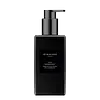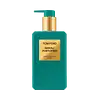What's inside
What's inside
 Key Ingredients
Key Ingredients

 Benefits
Benefits

 Concerns
Concerns

 Ingredients Side-by-side
Ingredients Side-by-side

Water
Skin ConditioningSodium Laureth Sulfate
CleansingLauramidopropyl Betaine
CleansingParfum
MaskingGlycerin
HumectantPEG-120 Methyl Glucose Dioleate
EmulsifyingMyristamidopropyl Betaine
CleansingCeteth-20
CleansingCaffeine
Skin ConditioningLimnanthes Alba Seed Oil
Skin ConditioningSalicornia Herbacea Extract
Skin ConditioningPPG-26-Buteth-26
Skin ConditioningCaprylyl Glycol
EmollientPEG-6 Caprylic/Capric Glycerides
EmulsifyingEthylhexylglycerin
Skin ConditioningButylene Glycol
HumectantPentylene Glycol
Skin ConditioningPolysorbate 20
EmulsifyingPEG-150 Pentaerythrityl Tetrastearate
EmulsifyingSucrose
HumectantPEG-40 Hydrogenated Castor Oil
EmulsifyingSodium Chloride
MaskingHexylene Glycol
EmulsifyingPolyquaternium-7
Citric Acid
BufferingLimonene
PerfumingLinalool
PerfumingBHT
AntioxidantPhenoxyethanol
PreservativeSodium Benzoate
MaskingWater, Sodium Laureth Sulfate, Lauramidopropyl Betaine, Parfum, Glycerin, PEG-120 Methyl Glucose Dioleate, Myristamidopropyl Betaine, Ceteth-20, Caffeine, Limnanthes Alba Seed Oil, Salicornia Herbacea Extract, PPG-26-Buteth-26, Caprylyl Glycol, PEG-6 Caprylic/Capric Glycerides, Ethylhexylglycerin, Butylene Glycol, Pentylene Glycol, Polysorbate 20, PEG-150 Pentaerythrityl Tetrastearate, Sucrose, PEG-40 Hydrogenated Castor Oil, Sodium Chloride, Hexylene Glycol, Polyquaternium-7, Citric Acid, Limonene, Linalool, BHT, Phenoxyethanol, Sodium Benzoate
Water
Skin ConditioningSodium Laureth Sulfate
CleansingSodium Coco-Sulfate
CleansingAcrylates Copolymer
Parfum
MaskingLauramidopropyl Betaine
CleansingPPG-26-Buteth-26
Skin ConditioningSqualane
EmollientPanthenol
Skin ConditioningLimnanthes Alba Seed Oil
Skin ConditioningVitis Vinifera Seed Oil
EmollientOlea Europaea Fruit Oil
MaskingHydrogenated Vegetable Oil
EmollientGlycerin
HumectantMyristamidopropyl Betaine
CleansingSodium Coco Pg-Dimonium Chloride Phosphate
CleansingCaprylyl Glycol
EmollientSucrose
HumectantSodium Methyl Cocoyl Taurate
CleansingHexylene Glycol
EmulsifyingPolyquaternium-7
Potassium Hydroxide
BufferingPEG-40 Hydrogenated Castor Oil
EmulsifyingLimonene
PerfumingLinalool
PerfumingGeraniol
PerfumingFarnesol
PerfumingTocopheryl Acetate
AntioxidantBHT
AntioxidantDisodium EDTA
Phenoxyethanol
PreservativeSodium Benzoate
MaskingPotassium Sorbate
PreservativeWater, Sodium Laureth Sulfate, Sodium Coco-Sulfate, Acrylates Copolymer, Parfum, Lauramidopropyl Betaine, PPG-26-Buteth-26, Squalane, Panthenol, Limnanthes Alba Seed Oil, Vitis Vinifera Seed Oil, Olea Europaea Fruit Oil, Hydrogenated Vegetable Oil, Glycerin, Myristamidopropyl Betaine, Sodium Coco Pg-Dimonium Chloride Phosphate, Caprylyl Glycol, Sucrose, Sodium Methyl Cocoyl Taurate, Hexylene Glycol, Polyquaternium-7, Potassium Hydroxide, PEG-40 Hydrogenated Castor Oil, Limonene, Linalool, Geraniol, Farnesol, Tocopheryl Acetate, BHT, Disodium EDTA, Phenoxyethanol, Sodium Benzoate, Potassium Sorbate
Ingredients Explained
These ingredients are found in both products.
Ingredients higher up in an ingredient list are typically present in a larger amount.
BHT is a synthetic antioxidant and preservative.
As an antioxidant, it helps your body fight off free-radicals. Free-radicals are molecules that may damage your skin cells.
As a preservative, it is used to stabilize products and prevent them from degrading. Specifically, BHT prevents degradation from oxidation.
The concerns related to BHT come from oral studies; this ingredient is currently allowed for use by both the FDA and EU.
However, it was recently restricted for use in the UK as of April 2024.
Learn more about BHTCaprylyl Glycol is a humectant and emollient, meaning it attracts and preserves moisture.
It is a common ingredient in many products, especially those designed to hydrate skin. The primary benefits are retaining moisture, skin softening, and promoting a healthy skin barrier.
Though Caprylyl Glycol is an alcohol derived from fatty acids, it is not the kind that can dry out skin.
This ingredient is also used as a preservative to extend the life of products. It has slight antimicrobial properties.
Learn more about Caprylyl GlycolGlycerin is already naturally found in your skin. It helps moisturize and protect your skin.
A study from 2016 found glycerin to be more effective as a humectant than AHAs and hyaluronic acid.
As a humectant, it helps the skin stay hydrated by pulling moisture to your skin. The low molecular weight of glycerin allows it to pull moisture into the deeper layers of your skin.
Hydrated skin improves your skin barrier; Your skin barrier helps protect against irritants and bacteria.
Glycerin has also been found to have antimicrobial and antiviral properties. Due to these properties, glycerin is often used in wound and burn treatments.
In cosmetics, glycerin is usually derived from plants such as soybean or palm. However, it can also be sourced from animals, such as tallow or animal fat.
This ingredient is organic, colorless, odorless, and non-toxic.
Glycerin is the name for this ingredient in American English. British English uses Glycerol/Glycerine.
Learn more about GlycerinHexylene Glycol is a surfactant. Glycols are a class of alcohols. Hexylene Glycol is a surfactant and emulsifier.
As a surfactant, Hexylene Glycol helps gather dirt and oil on your skin to be washed away.
As an emulsifier, Hexylene Glycol helps keep water and oil together. This prevents them from separating in a product. Hexylene Glycol also thins out the texture of a product by lessening viscosity.
Hexylene Glycol has a small molecular weight.
Learn more about Hexylene GlycolWe don't have a description for Lauramidopropyl Betaine yet.
Limnanthes Alba Seed Oil is the oil extracted from the seeds of the meadowfoam plant. This oil is non-fragrant and is an emollient. As an emollient, meadowfoam seed oil helps soften and hydrate the skin.
Meadowfoam seed oil is stable and has a long shelf life due to its chemical structure. It has the highest concentration of stable fatty-acids among plant oils, preventing it from degrading once exposed to oxygen.
Due to the fatty acid content, this ingredient may not be fungal-acne safe.
Meadowfoam is native to California and Oregon.
Learn more about Limnanthes Alba Seed OilLimonene is a fragrance that adds scent and taste to a formulation.
It's found in the peel oil of citrus fruits and other plants such as lavender and eucalyptus. The scent of limonene is generally described as "sweet citrus".
Limonene acts as an antioxidant, meaning it helps neutralize free radicals.
When exposed to air, oxidized limonene may sensitize the skin. Because of this, limonene is often avoided by people with sensitive skin.
The term 'fragrance' is not regulated in many countries. In many cases, it is up to the brand to define this term. For instance, many brands choose to label themselves as "fragrance-free" because they are not using synthetic fragrances. However, their products may still contain ingredients such as essential oils that are considered a fragrance.
Learn more about LimoneneLinalool is a fragrance and helps add scent to products. It's derived from common plants such as cinnamon, mint, citrus, and lavender.
Like Limonene, this ingredient oxidizes when exposed to air. Oxidized linalool can cause allergies and skin sensitivity.
This ingredient has a scent that is floral, spicy tropical, and citrus-like.
Learn more about LinaloolWe don't have a description for Myristamidopropyl Betaine yet.
Parfum is a catch-all term for an ingredient or more that is used to give a scent to products.
Also called "fragrance", this ingredient can be a blend of hundreds of chemicals or plant oils. This means every product with "fragrance" or "parfum" in the ingredients list is a different mixture.
For instance, Habanolide is a proprietary trade name for a specific aroma chemical. When used as a fragrance ingredient in cosmetics, most aroma chemicals fall under the broad labeling category of “FRAGRANCE” or “PARFUM” according to EU and US regulations.
The term 'parfum' or 'fragrance' is not regulated in many countries. In many cases, it is up to the brand to define this term.
For instance, many brands choose to label themselves as "fragrance-free" because they are not using synthetic fragrances. However, their products may still contain ingredients such as essential oils that are considered a fragrance by INCI standards.
One example is Calendula flower extract. Calendula is an essential oil that still imparts a scent or 'fragrance'.
Depending on the blend, the ingredients in the mixture can cause allergies and sensitivities on the skin. Some ingredients that are known EU allergens include linalool and citronellol.
Parfum can also be used to mask or cover an unpleasant scent.
The bottom line is: not all fragrances/parfum/ingredients are created equally. If you are worried about fragrances, we recommend taking a closer look at an ingredient. And of course, we always recommend speaking with a professional.
Learn more about ParfumPeg-40 Hydrogenated Castor Oil is derived from castor oil and polyethylene glycol (PEG). It is used as a emollient and emulsifier.
As an emulsifier, it helps prevent ingredients from separating. It also helps make the other ingredients more soluble; it is often used to solubilize fragrances. This increases spreadability and elongates shelf life in a product.
Emollients help soothe and soften the skin. They do this by creating a protective film on your skin. This barrier helps trap moisture and keeps your skin hydrated. Emollients may be effective at treating dry or itchy skin.
This ingredient may or may not be vegan, depending on the source.
Peg-40 Hydrogenated Castor Oil may not be fungal-acne safe. We recommend speaking with a professional if you have any questions or concerns.
Learn more about PEG-40 Hydrogenated Castor OilPhenoxyethanol is a preservative that has germicide, antimicrobial, and aromatic properties. Studies show that phenoxyethanol can prevent microbial growth. By itself, it has a scent that is similar to that of a rose.
It's often used in formulations along with Caprylyl Glycol to preserve the shelf life of products.
Polyquaternium-7 is a light to clear colored liquid. It is commonly found in haircare products for its film-forming and anti-static properties.
According to a manufacturer, it is a non-paraben and specially developed for negatively charged surfactant systems. This makes it a great hairstyle holder and helps to improve wet hair detangling without adding buildup.
We don't have a description for PPG-26-Buteth-26 yet.
Sodium Benzoate is a preservative. It's used in both cosmetic and food products to inhibit the growth of mold and bacteria. It is typically produced synthetically.
Both the US FDA and EU Health Committee have approved the use of sodium benzoate. In the US, levels of 0.1% (of the total product) are allowed.
Sodium benzoate works as a preservative by inhibiting the growth of bacteria inside of cells. It prevents the cell from fermenting a type of sugar using an enzyme called phosphofructokinase.
It is the salt of benzoic acid. Foods containing sodium benzoate include soda, salad dressings, condiments, fruit juices, wines, and snack foods.
Studies for using ascorbic acid and sodium benzoate in cosmetics are lacking, especially in skincare routines with multiple steps.
We always recommend speaking with a professional, such as a dermatologist, if you have any concerns.
Learn more about Sodium BenzoateSodium Laureth Sulfate (SLES) is a foaming, cleansing, and emulsifying ingredient. It is created from palm kernel oil or coconut oil. SLES is not the same as sodium lauryl sulfate. It is much milder and less likely to irritate.
SLES helps create foam in personal products. It also prevents ingredients from separating, helping to elongate the shelf life.
Sodium Laureth Sulfate is a type of sulfate. It can be drying. We recommend speaking with a professional about using this ingredient if you have concerns.
Learn more about Sodium Laureth SulfateSucrose is a natural sugar found in fruits, vegetables, and nuts. It is the main constituent of white sugar.
In skincare, sucrose is a humectant and can be a mild exfoliant.
Sucrose is hydrophilic, meaning it attracts water. This makes it an effective humectant and helps hydrate the skin.
Studies show sugars may worsen acne-prone skin due to it disrupting the skin's natural biome. We recommend speaking with a professional if you have any concerns.
In some products such as body scrubs, sucrose is used as an gentle exfoliant.
The term 'sucrose' comes from the french word for sugar, 'sucre'.
Learn more about SucroseWater. It's the most common cosmetic ingredient of all. You'll usually see it at the top of ingredient lists, meaning that it makes up the largest part of the product.
So why is it so popular? Water most often acts as a solvent - this means that it helps dissolve other ingredients into the formulation.
You'll also recognize water as that liquid we all need to stay alive. If you see this, drink a glass of water. Stay hydrated!
Learn more about Water